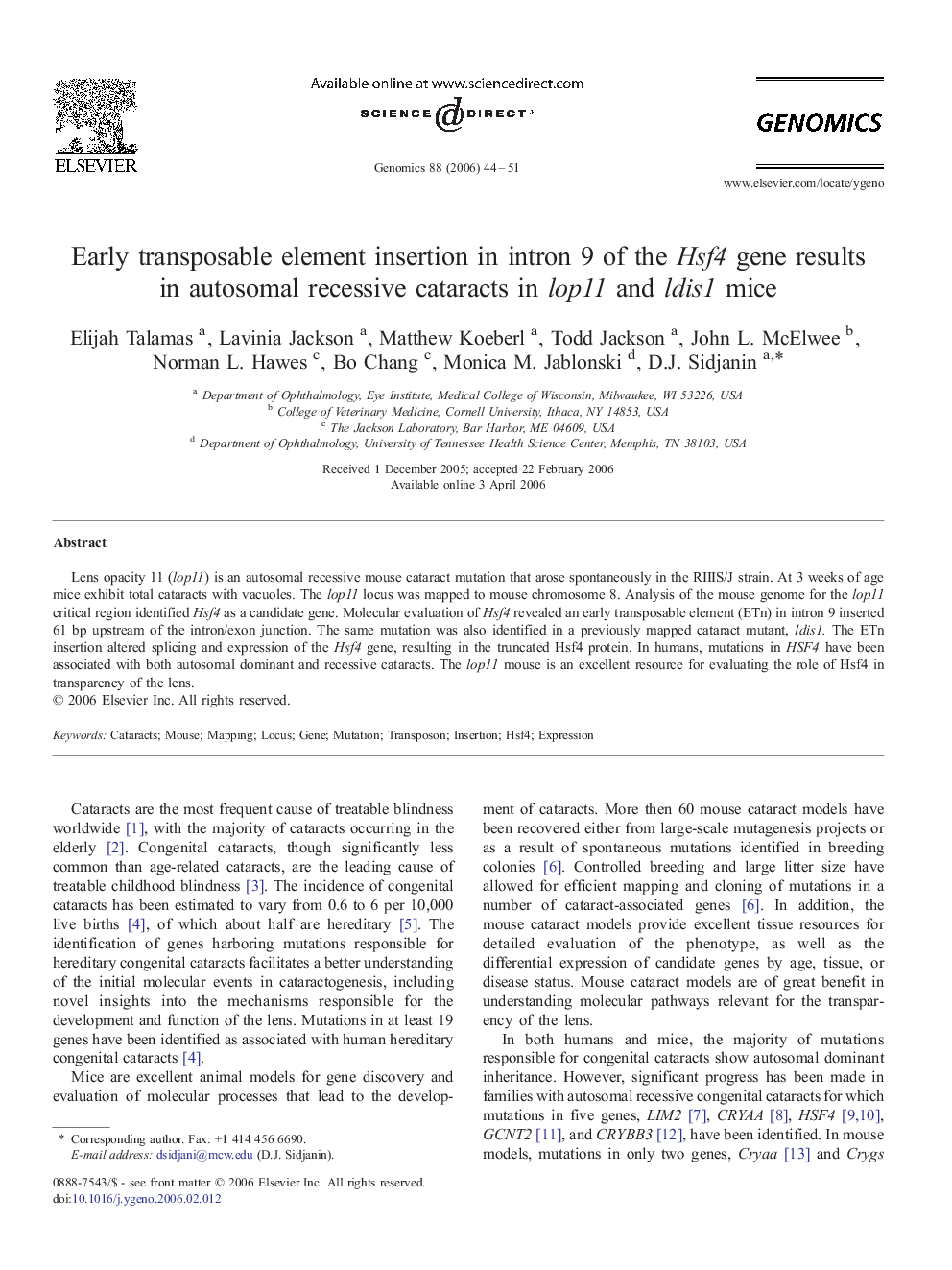| کد مقاله | کد نشریه | سال انتشار | مقاله انگلیسی | نسخه تمام متن |
|---|---|---|---|---|
| 2821420 | 1160950 | 2006 | 8 صفحه PDF | دانلود رایگان |

Lens opacity 11 (lop11) is an autosomal recessive mouse cataract mutation that arose spontaneously in the RIIIS/J strain. At 3 weeks of age mice exhibit total cataracts with vacuoles. The lop11 locus was mapped to mouse chromosome 8. Analysis of the mouse genome for the lop11 critical region identified Hsf4 as a candidate gene. Molecular evaluation of Hsf4 revealed an early transposable element (ETn) in intron 9 inserted 61 bp upstream of the intron/exon junction. The same mutation was also identified in a previously mapped cataract mutant, ldis1. The ETn insertion altered splicing and expression of the Hsf4 gene, resulting in the truncated Hsf4 protein. In humans, mutations in HSF4 have been associated with both autosomal dominant and recessive cataracts. The lop11 mouse is an excellent resource for evaluating the role of Hsf4 in transparency of the lens.
Journal: Genomics - Volume 88, Issue 1, July 2006, Pages 44–51